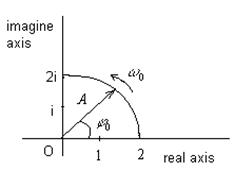
CATEGORIES:
BiologyChemistryConstructionCultureEcologyEconomyElectronicsFinanceGeographyHistoryInformaticsLawMathematicsMechanicsMedicineOtherPedagogyPhilosophyPhysicsPolicyPsychologySociologySportTourism
Lecture 8. Vibrations
Small deviations from equilibrium
Harmonic oscillation is the periodic variation of a quantity, which can be expressed as a sine or cosine function. The following classifications are used. On the basis of proceeding from the nature of oscillations: mechanical and electromagnetic. On the basis of proceeding from external forces: free and forced oscillation. On the basis of proceeding of the energy changing: undamped and damped oscillations. On the basis of proceeding from the form of equations: harmonic and unharmonic oscillations.
Characteristics of harmonic oscillations:
- the period T is the time of one full oscillation;
- the frequency n is the number of oscillations per unit of time:  , [n]=Hz. - the cyclic frequency:
, [n]=Hz. - the cyclic frequency:
 , [w0] =
, [w0] =  . (8.1)
. (8.1)
Any harmonic oscillation can be illustrated by the graph or by the vector diagram. Fig.8.1 represents graph of function
 . (8.2)
. (8.2)

Figure 8.1
For vector diagrams complex numbers are used. Any complex number contains  Value i is called imaginary unit. Now letís construct the vector diagram of equation
Value i is called imaginary unit. Now letís construct the vector diagram of equation
 ; (8.3)
; (8.3)

 ;
; 
 .
.
The vector is of 2 m length and is situated under the initial angle  . The vector is rotation of the watch hand with angle velocity
. The vector is rotation of the watch hand with angle velocity 
 .
.

Figure 8.2
Date: 2015-01-12; view: 1383
| <== previous page | | | next page ==> |
| Lecture 7. Forces of Inertia | | | Velocity, Acceleration, Energy of Harmonic Oscillations |